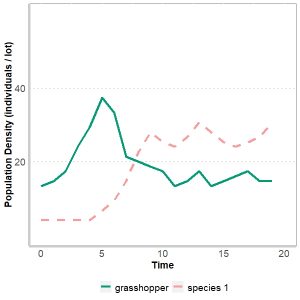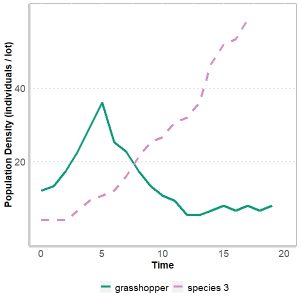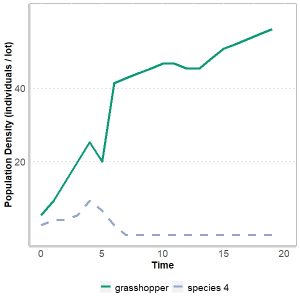| Age | Course | Class/Term | |||
| Elementary School | |||||
| On average, what is your estimate of hours per week you play games in general? | |||||
| On average, what is your estimate of hours per week you study? | |||||
Imagine that you are a farmer who is starting to work with rice crops. At a certain time after planting, you notice that your plants are showing an infestation by a kind of “pest”. The species in question is the grasshopper. Talking to other fellow farmers, you learn that when this infestation is not controlled, your crop loss can reach 80% of the planting! To try to control it and avoid this damage, what methods would you use?
Biological control, a technique used to combat species that cause damage and harm to humans, is used to combat the caterpillar that feeds on cotton leaves. Some species of butterfly lay their eggs in this culture. The microvespa Trichogramma sp. introduces its eggs into the eggs of other insects, including those of the butterflies in question. Wasp embryos feed on the contents of these eggs and prevent butterfly larvae from developing. Thus, it is possible to reduce the population density of butterflies to levels that do not harm the culture. The biological control technique performed by the microvespa Trichogramma sp. consists of:
One of the alternatives to replace the use of insecticides in agriculture is biological control. This technique consists of:
In 1839, a single specimen of a cactus originating in South America was introduced in Australia, which until then did not exist in that continent, the prickly pear. This plant proliferated intensely and, in a short time, occupied land previously used for livestock. After numerous failed attempts to combat the plant, in 1925 a small butterfly was introduced to Australia whose larvae feed on the stem of the prickly pear. As a consequence, the plants were destroyed at almost the same rate as they had initially proliferated. With the help of the text, check the alternative (s) you consider correct.
Biological control consists of suppressing pests using natural enemies. It is widely used in the control of various diseases. Regarding this type of control, check the CORRECT item:
In general, the methods used to manage pests and diseases in the organic system can be summarized in three main points:
1) increase in plant resistance (adequate management, adapted species and biofertilizers);
2) biological control and use of pheromones;
3) physical protection, repellents and curative treatments based on natural products.
Biological control is based mainly on:
You remember that your rice paddy was showing a grasshopper infestation, right? Looking more closely at your plants, you realized that the damage caused was significant when the grasshopper population reached a density of 20 individuals per batch of rice. You noticed, however, that in the ecosystem where your plantation was located, there were also four other species of insects, in addition to the grasshopper that you were trying to control.
In order to understand the interaction between these species, you carry out an experiment: you collect some individuals from the grasshopper population and start four breeding indoors. Subsequently, it introduces in each creation one of the other species of insects. The results observed in each of these creations are shown in the graphs below.
The graph below shows the populations of grasshopper (green) and insect species 1 (pink) as seen in creation 1. Based on this result, would you be able to explain what is the interaction between the two species in nature?

The graph below shows the populations of grasshopper (green) and insect species 2 (pink) as seen in creation 2. Based on this result, would you be able to explain what is the interaction between the two species in nature?

The graph below shows the populations of grasshopper (green) and insect species 3 (pink) as seen in creation 3. Based on this result, would you be able to explain what is the interaction between the two species in nature?

The graph below shows the populations of grasshopper (green) and insect species 4 (pink) as seen in creation 4. Based on this result, would you be able to explain what is the interaction between the two species in nature?

How can the results of the experiments be useful to agriculture?
Indicate which species (s) can be used in the management of the grasshopper.
Your neighbor, instead of trying the techniques of biological control, opted to apply a pesticide in the plantation to combat this “plague”. Altogether he made three applications of pesticides. The graph below shows the results obtained by him.

In the graphic above, each blue vertical line corresponds to a moment of pesticide application. Explain the observed differences (in relation to the response of the locust population) between the type of control adopted by your neighbor to what would be expected in the adoption of biological control.